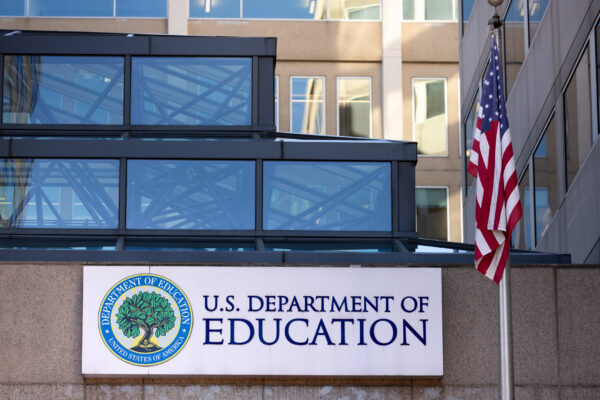Last month, the Collaborative for Student Success released its latest “Honesty Gap” analysis, looking at the differences between the shares proficient as measured by state standardized tests and the shares proficient on NAEP. What they found is that in many states, the gaps persist. “If we believe that NAEP is indeed the Nation’s Report Record on student proficiency, then we would hope there is little difference between the outcomes on the two tests,” said the Collaborative’s Executive Director Jim Cowen.
By our count, there are 21 states where the gap on at least one test (4th grade math, 4th grade reading, 8th grade math, or 8th grade reading) was equal to or exceeded 20 points. “In many states,” Cowen continued, “the gaps suggest that parents simply aren’t getting the full picture of how prepared their kids are for college or the workforce” (emphasis added).
Also earlier this month, President Trump signed his long-awaited executive order to close the Department of Education. To prove the administration’s case against the Department, the order cited data from the latest NAEP to prove that the “federal education bureaucracy is not working.”
For far too many students, it is not working, and has not been working for some time. From the latest NAEP data, 39% of eighth graders are considered below basic in math. Just a few weeks before that, data from the most recent TIMSS was released, showing the US at 24th in the world in 8th grade math. A year prior, the PISA results showed that US 15-year-olds ranked 34th in math. Poor performance now has consequences for our future economic and national security, especially as we continue to fall behind allies and adversaries alike. “We have to get our children educated,” Trump said at the signing ceremony. “We’re not doing well with the world of education in this country and we haven’t in a long time.”
The administration is right to focus on student outcomes (the order was titled “Improving Education Outcomes by Empowering Parents, States, and Communities”). But as the bureaucracy shuffles and Education Department responsibilities may be transferred to other agencies, it will be critical to make the case for preserving the assessment and data collection done under NAEP. As the Nation’s Report Card, it is our common yardstick and what makes analyses like the Collaborative’s possible. Virginia is a notable example of a state with large proficiency gaps that has committed to raising its standards to align with those of the national test. But without NAEP to serve as an accountability check for states, there will be far less transparency for parents, policymakers and the general public to gauge how we are doing in educating our students.
For more on this topic, see David’s recent column for Roll Call, “We must protect NAEP, the gold standard for education accountability”.







